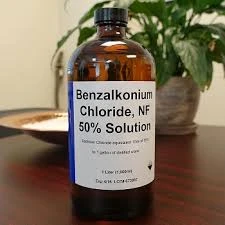Understanding Sodium HEDP and Its Applications in Various Industries
Sodium HEDP An Overview of Its Applications and Benefits
Sodium HEDP (Hydroxyethylidene Diphosphonic Acid) is a highly effective phosphonate compound widely used in various industrial applications, particularly in water treatment, oil & gas, and metal cleaning. Its unique chemical properties make it a preferred choice in environments where calcium and magnesium ions are prevalent, which can lead to scale formation and corrosion in industrial systems.
Chemical Properties of Sodium HEDP
Sodium HEDP is a water-soluble salt, typically in the form of a colorless to slightly yellow liquid. It features two phosphonic acid groups, which confer its chelating abilities, allowing it to bind with metal ions and prevent them from forming scale deposits. The formula for sodium HEDP is C2H8O7P2Na, and it possesses a molecular weight of about 265.03 g/mol. This compound is recognized for its excellent stability and effectiveness over a wide pH range, making it ideal for diverse applications.
Applications in Water Treatment
One of the primary applications of sodium HEDP is in the treatment of industrial water systems. In cooling water systems, for instance, sodium HEDP helps control scale formation, which can significantly hinder efficiency and lead to costly downtime. The scale typically comprises calcium carbonate and other mineral deposits that precipitate out of water, leading to clogged pipes and heat exchangers. By chelating these minerals, sodium HEDP prevents their deposition, thereby ensuring smooth operation of cooling systems.
In boiler systems, sodium HEDP acts as an anti-scalant, reducing the likelihood of scale build-up from calcium and magnesium salts. Regular use of sodium HEDP in such applications enhances heat transfer efficiency and extends the lifespan of equipment, resulting in significant cost savings for industries reliant on thermal energy.
Oil and Gas Industry
Sodium HEDP also sees extensive use in the oil and gas sector. It serves as a scale inhibitor in oil production processes, particularly in offshore drilling operations where the presence of salts and minerals can lead to severe scaling problems. By inhibiting the precipitation of mineral scales, sodium HEDP ensures the efficiency of pumps and other extraction equipment, ultimately maximizing the yield of oil production.
sodium hedp 钠hedp

Additionally, sodium HEDP acts as a corrosion inhibitor, protecting the integrity of pipelines and equipment in challenging environments where corrosive substances can degrade metal surfaces. This protective action not only reduces maintenance and replacement costs but also enhances safety in oil and gas operations.
Metal Cleaning and Surface Treatment
Another significant use of sodium HEDP is in metal cleaning applications. It is often incorporated into formulations designed for the removal of rust and other contaminants from metal surfaces. The ability of sodium HEDP to chelate metal ions means that it can effectively dissolve rust and oxides, allowing for cleaner surfaces and better adhesion for coatings and paints.
Industries engaged in manufacturing, automotive, and aerospace frequently employ sodium HEDP in cleaning processes. The compound improves surface preparation by ensuring that metal parts are adequately cleaned of any potential contaminants, which is essential for processes such as painting, galvanizing, or electroplating.
Environmental Considerations and Safety
Sodium HEDP is considered environmentally friendly compared to traditional phosphates that can contribute to eutrophication in aquatic systems. Furthermore, the use of sodium HEDP in water treatment applications helps reduce the overall chemical load in discharged effluents, promoting safer waste management practices.
While sodium HEDP is generally regarded as safe when used according to guidelines, it is essential for personnel handling this compound to use appropriate personal protective equipment (PPE) to avoid skin and eye irritation. As with any chemical, adhering to safety data sheets and local regulations is vital to ensure safe handling and disposal.
Conclusion
In summary, sodium HEDP is a versatile and valuable compound used across various industries, primarily for its effectiveness in water treatment and metal cleaning. Its ability to inhibit scale formation and corrosion not only enhances operational efficiency but also contributes to the overall sustainability of industrial practices. As industries continue to seek safer and more effective chemical solutions, sodium HEDP is likely to remain a critical component in optimizing resource management and improving performance across multiple sectors.
-
2 Phosphonobutane 1,2,4 Tricarboxylic Acid (PBTCA): Superior Scale & Corrosion InhibitorNewsAug.31,2025
-
Dodecyldimethylbenzylammonium Chloride: High-Purity DisinfectantNewsAug.30,2025
-
2-Phosphonobutane-1,2,4-Tricarboxylic Acid: Scale & CorrosionNewsAug.29,2025
-
Premium Isothiazolinones | Broad-Spectrum Biocidal SolutionsNewsAug.28,2025
-
LK-319 Special Scale And Corrosion Inhibitor For Steel Plants: Advanced Solutions for Industrial Water SystemsNewsAug.22,2025
-
Flocculant Water Treatment: Essential Chemical Solutions for Purification ProcessesNewsAug.22,2025





